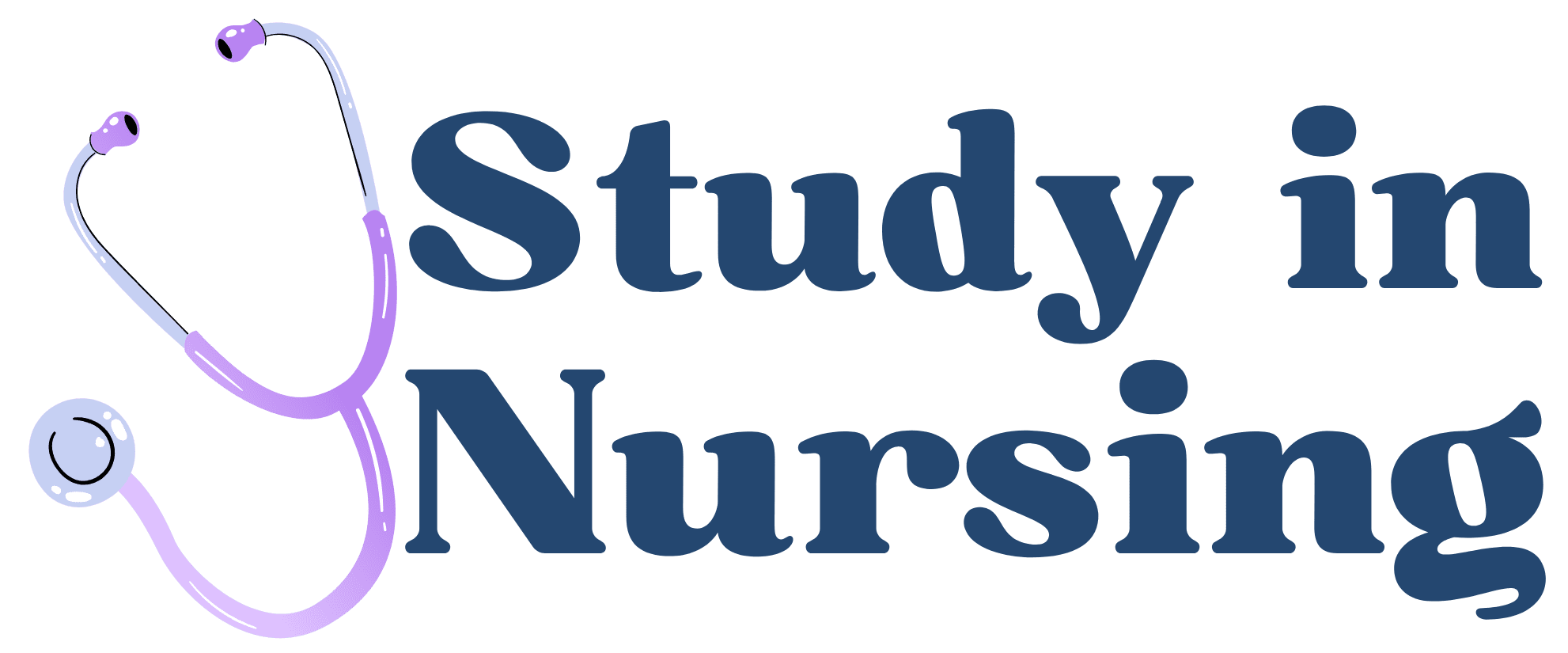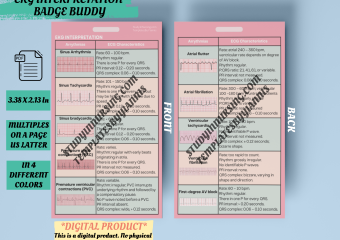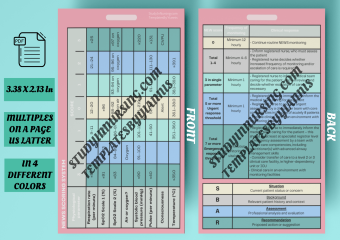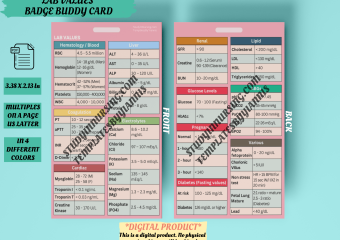Nurse Badge Reference Cards: A Glimpse Behind The Badge
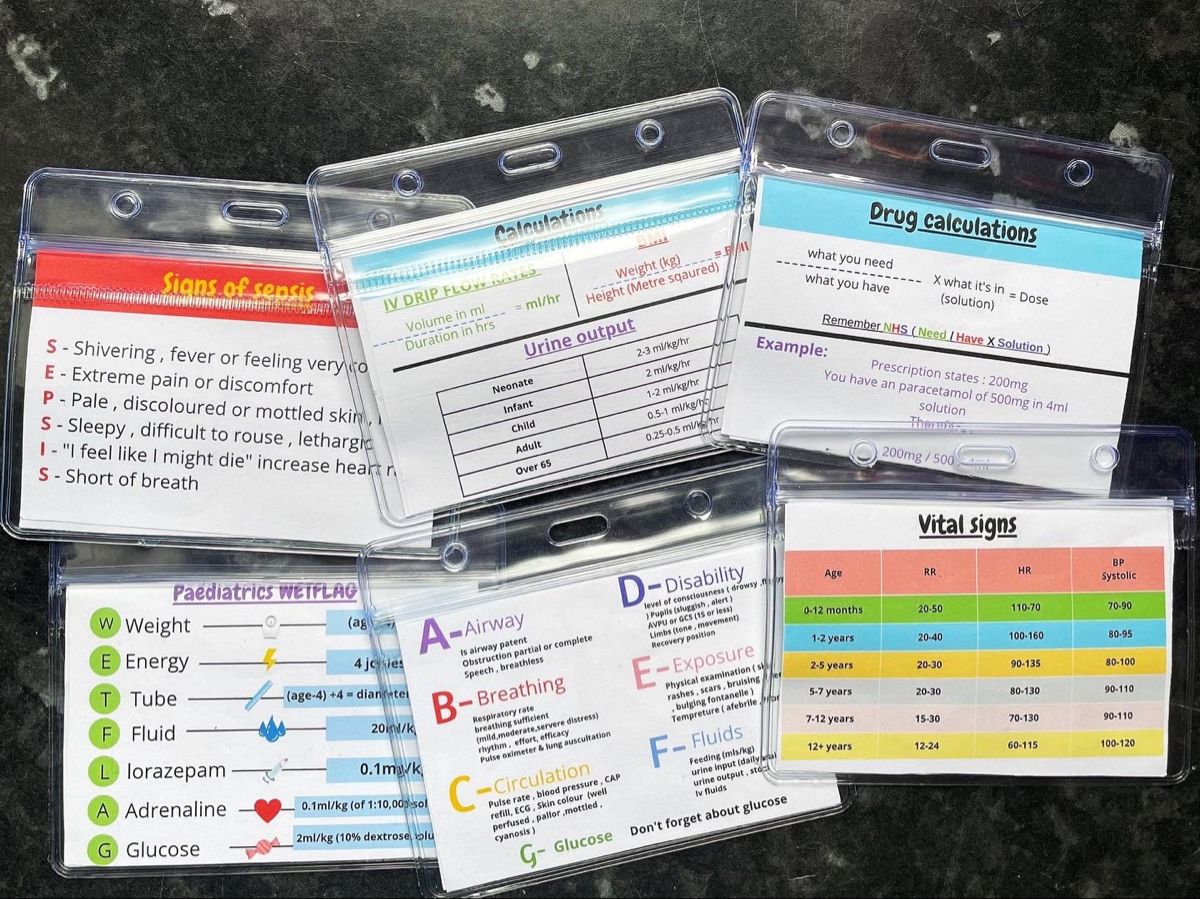
- MICU vs SICU: What is the difference? - March 25, 2024
- Are Nurses First Responders? - March 5, 2024
- What’s the Difference Between a CCU and an ICU? - January 25, 2024
Nurses, as many of us know, are the backbone of any medical institution. Beyond the dedication, care, and skills they provide, they are also juggling numerous procedures, medications, and protocols daily. One of the handy tools that nurses often have is a set of reference cards attached to their badges. These nurse badge reference cards provide quick, easy-to-access information essential for their roles. For those outside of nursing or new to the field, these badge cards can be an intriguing curiosity. So, what do these reference cards often contain, and why are they so crucial for the nursing workflow?
Conversion Tables
In the dynamic environment of healthcare, efficiency and accuracy are paramount. Conversion tables serve this exact purpose for nurses. These tables primarily assist in ensuring that there are no discrepancies when it comes to patient care, especially with dosages. Imagine needing to quickly convert a patient’s weight from pounds to kilograms or a medication volume from milliliters to ounces; doing so mentally can be time-consuming and prone to errors. With various patients and different measurements, the range of conversions nurses may face daily is vast. Thus, having a handy conversion table right on their badge means nurses can swiftly and confidently make the necessary conversions, ensuring both safety and accuracy for their patients.
Vital Signs Ranges
Vital signs serve as the immediate indicators of a patient’s overall health and well-being. These signs include parameters such as heart rate, blood pressure, temperature, and respiratory rate. Because the acceptable range for these signs can vary significantly based on factors like age, gender, and health conditions, it’s imperative for nurses to have an at-a-glance guide. An infant’s normal heart rate, for instance, is much faster than an adult’s. Therefore, having a quick reference for vital signs ranges, especially for nurses in fast-paced environments like the emergency department, ensures that any abnormalities can be identified and addressed immediately, making timely interventions possible.
Abbreviations and Symbols
Medical documentation, whether on paper or electronic, is filled with a plethora of abbreviations and symbols. These shorthand notations help streamline communication and save time. However, with the vast number of terms and the introduction of new ones, it’s quite a task to remember them all. While many abbreviations become almost second nature to seasoned nurses, less frequently used ones or newly coined terms can pose challenges. A badge card detailing these abbreviations ensures clear communication, avoiding potentially harmful misunderstandings. After all, in healthcare, clarity in communication is synonymous with patient safety.
EKG Interpretation
Electrocardiograms, commonly known as EKGs or ECGs, provide a graphical representation of the electrical activity of the heart. For nurses working in cardiac or critical care settings, interpreting these readings is a daily task. Different wave patterns and rhythms can indicate various heart conditions, some of which require immediate intervention. Given the myriad of possible rhythms and their implications, having a quick-reference EKG interpretation guide is invaluable. It not only aids in reinforcing a nurse’s training but ensures that no crucial detail is overlooked, especially in high-stress situations.
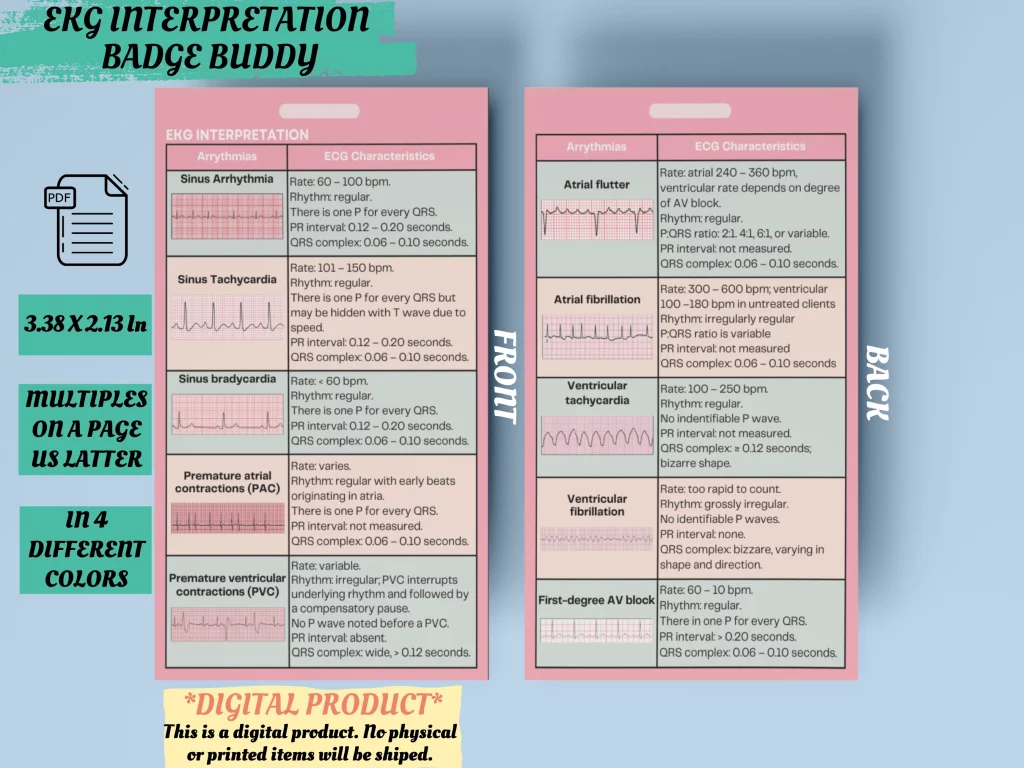
Lab Value Norms
Laboratory tests are integral to diagnostics and patient monitoring. They offer insights into numerous physiological parameters, from blood cell counts to enzyme levels. However, each of these tests has its ‘normal’ range, and remembering the standard values for all these tests can be daunting. Furthermore, these ranges can differ based on the lab and equipment used. With a badge card detailing the norms for lab values, nurses can swiftly cross-reference a patient’s results. This immediate access to information ensures that any deviation from the norm is noticed and acted upon, thereby ensuring timely care and interventions.
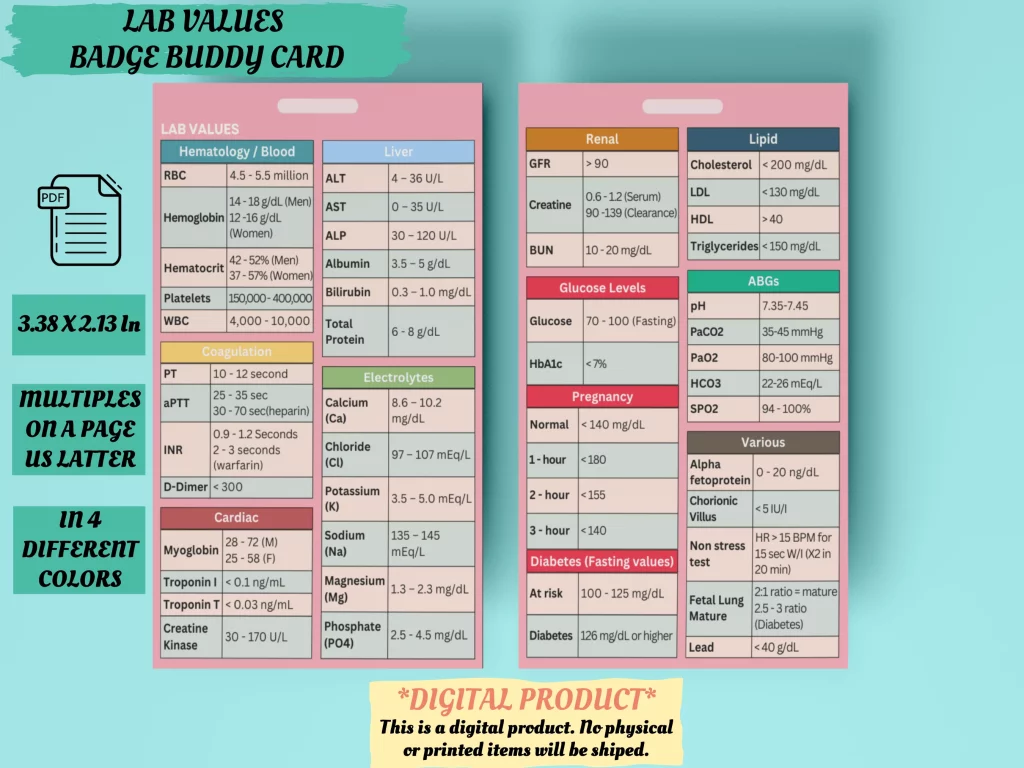
Medication Quick Guides
The world of medications is vast and ever-evolving. While some drugs are used daily and their details are ingrained in a nurse’s memory, others might be rarer or newly introduced. A quick reference guide to medications can be a lifesaver. It provides essential details such as indications for use, standard dosages, contraindications, and potential side effects. With this information at their fingertips, nurses can confidently administer medications, answer patient queries, and ensure that potential drug interactions or adverse reactions are anticipated and avoided. This badge card, therefore, is a testament to the profession’s commitment to patient safety and effective care.
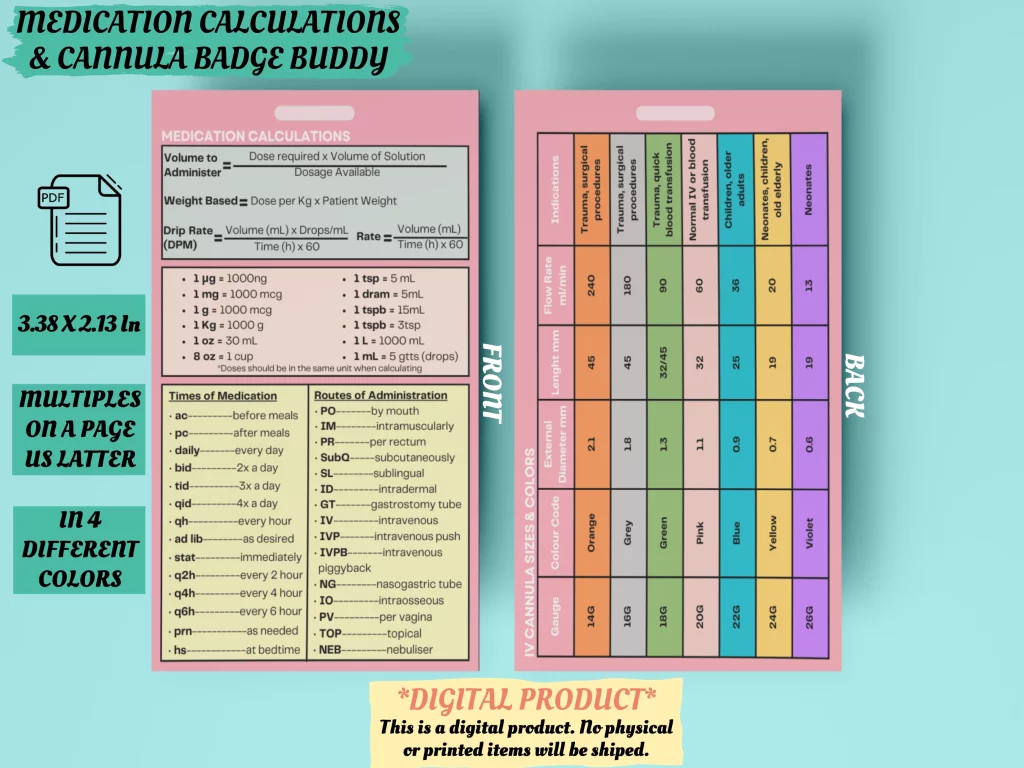
Certain nursing specialties might require frequent procedural interventions. Having a step-by-step guide or checklist for such procedures ensures consistency and adherence to best practices.
Why Are These Cards So Important?
At the heart of these reference cards lies the principle of patient safety and care efficiency. While nurses undergo rigorous training and have vast amounts of knowledge, the human mind can sometimes falter under stress or fatigue. These cards act as a second line of defense, ensuring that even in the most challenging times, the information needed is right at the fingertips.
In conclusion, while they might seem like simple pieces of laminated paper to an outsider, the nurse badge reference cards play an instrumental role in the daily lives of many nurses. They serve as a testament to the profession’s dedication to precision, patient safety, and continuous learning. If you’ve ever been curious about those little cards, now you know they pack a wealth of knowledge, acting as silent partners in the delivery of top-notch patient care.
